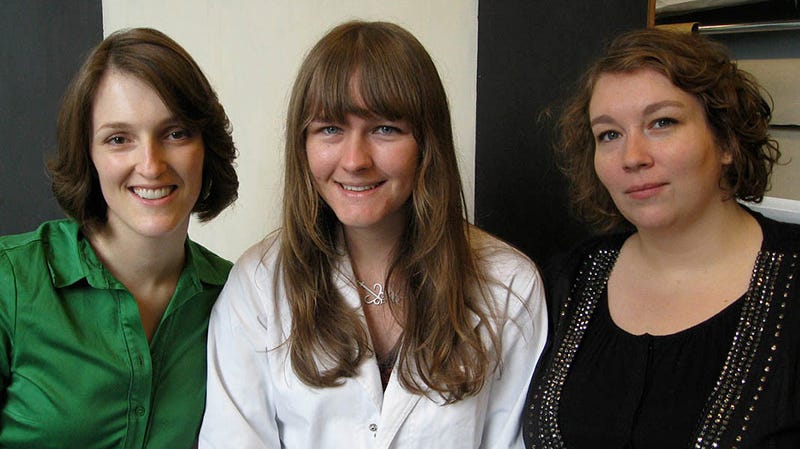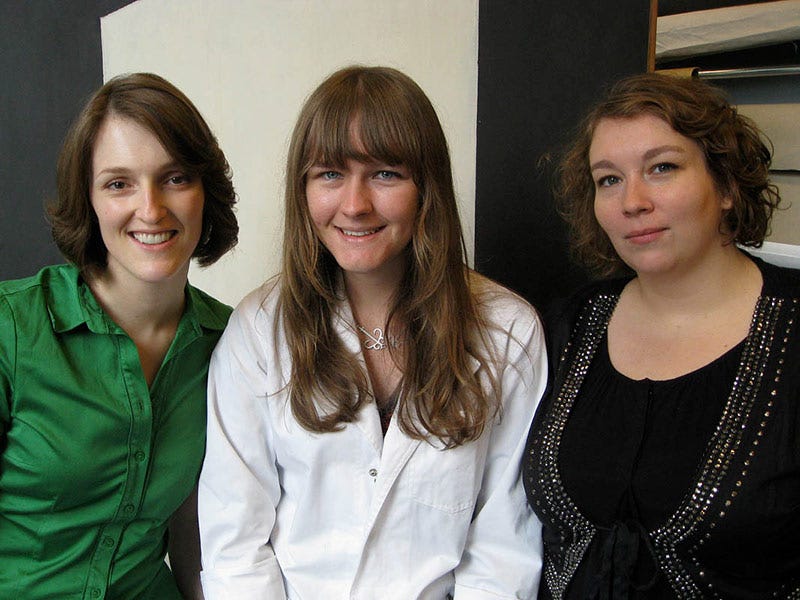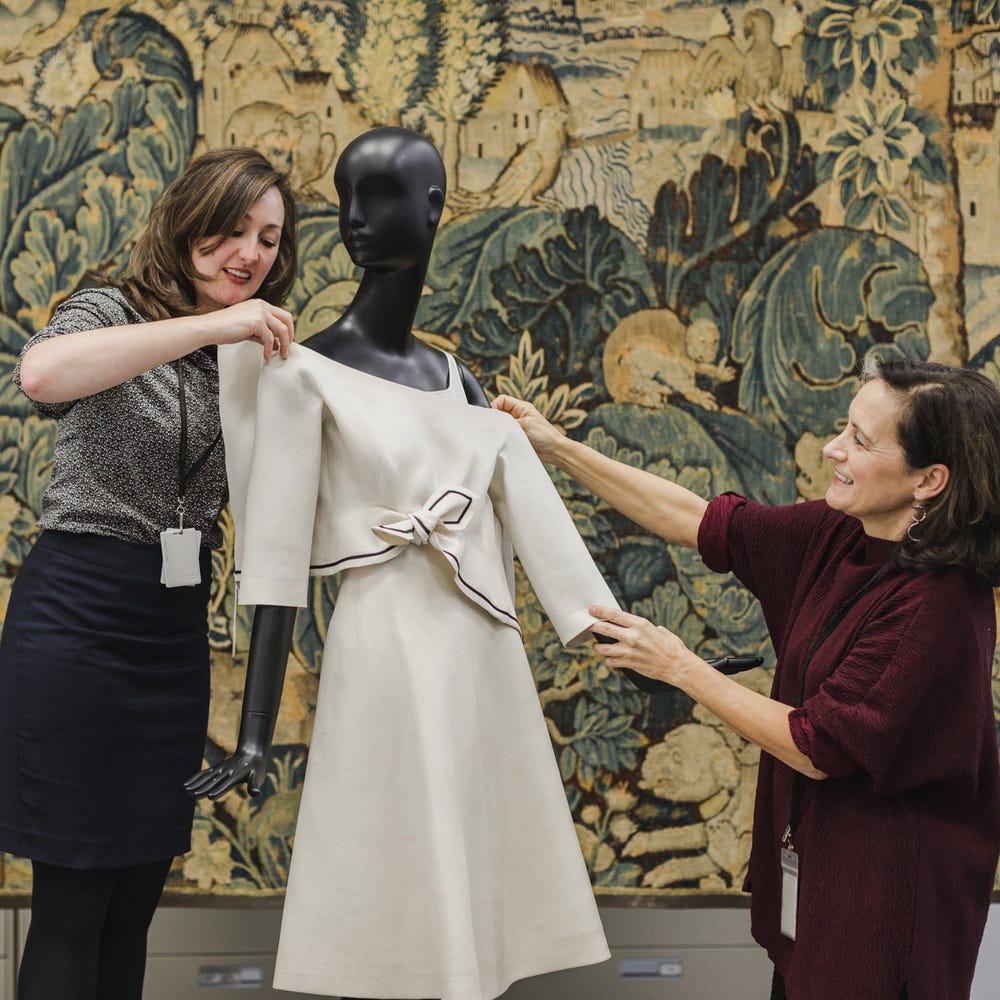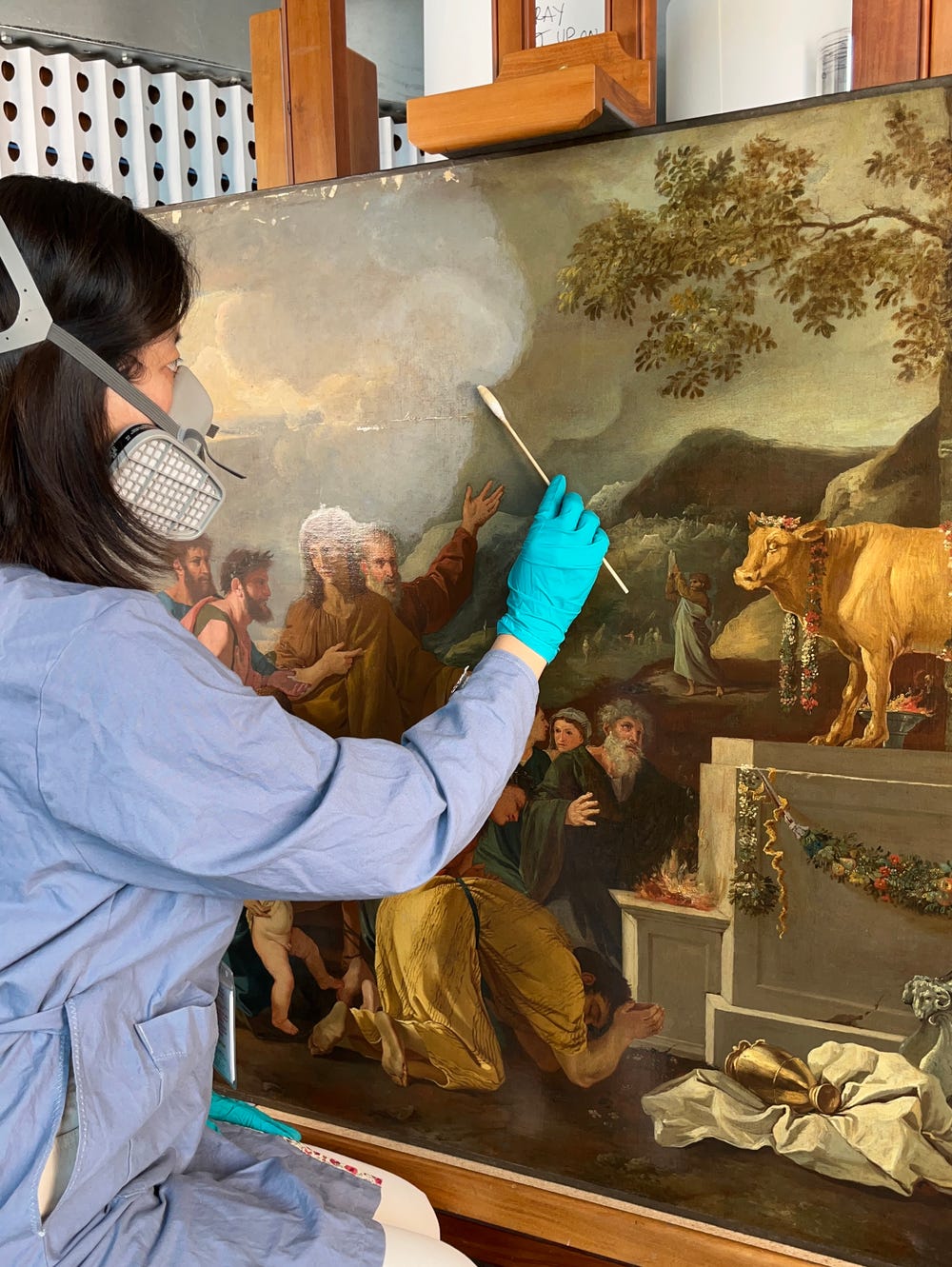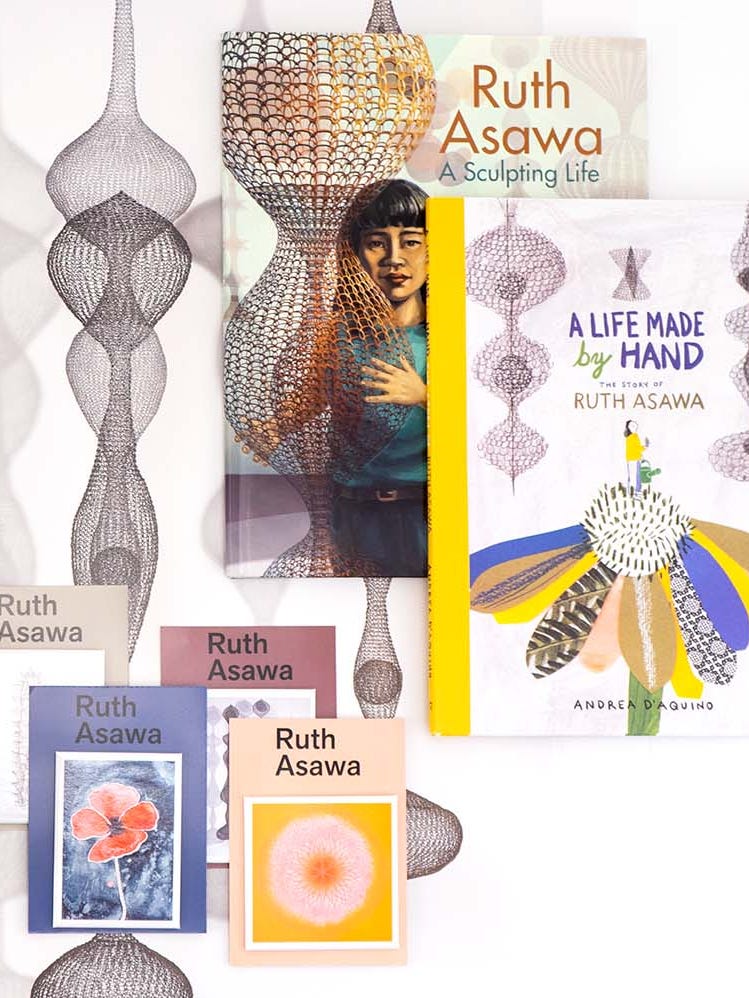Internships are a crucial part of the education and training of conservators. Currently we have three graduate interns in conservation from three different countries, allowing us a unique opportunity to discuss conservation training from an international perspective.
Erin Stephenson and Stephanie Ricordeau are interns in the Paintings Conservation department. Erin is completing her Master of Arts and Certificate of Advanced Study in Conservation through SUNY Buffalo State College while Stephanie is in the Master’s Program for Conservation-Restoration at La Sorbonne, Paris, France.
In the Objects Conservation department, Tegan Broderick is an intern completing her Master of Cultural Materials Conservation at the University of Melbourne, Australia.
The interns recently shared some interesting insights into their experiences in conservation.
FAMSF conservation interns (L to R): Erin Stephenson, Tegan Broderick, and Stephanie Ricordeau
Q: Tegan, what do you find rewarding about working in conservation?
Being able to work so closely with artifacts and artworks. Not many people have the opportunity to see the range of objects you encounter behind the scenes in a museum, and even less people get to work on them. Coming from a fine art background, I am particularly interested in manufacturing and fabrication techniques of objects. However, I am also interested in their history and the cultural context of their production and use. Working in this field facilitates an ongoing education in these areas. I also enjoy the varied tasks that the position involves; no one day is the same.
Q: Stephanie, what projects are you focusing on during your internship?
The painting conservation department has satisfied my desire to work on modern and contemporary works by giving me the responsibility of artworks painted by Bruce Conner, Diego Rivera, or from the Rudolph Schaeffer School of Design for example. I am therefore confronted with technical problems as well as ethical and deontological issues specific to the conservation of this type of work. Working on Bruce Conner’s assemblage painting also allows me to enrich my academic research into the implication of the artist in the preservation of his work mainly through interviews and through the collection of material samples during the creation of an artwork. In the case of this restoration, I have read some interviews of Bruce Conner and it helped me to propose a protocol of interventions that totally respects the opinion of the artist and his opinion about the aging of his artworks.
Q: Erin, what is one interesting or surprising thing you have discovered about doing conservation in a museum setting?
The pace, or rather how the pace is determined. Conservation work in graduate school is very fast and very stressful because we only have a limited time to learn everything we can to prepare for a career in conservation. We learn documentation skills, become familiar with and practice scientific analysis, and conduct multiple treatments and research all at once. Conservation in a regional center or private practice is influenced by the amount of work available and a careful balance of time versus funding. A museum lab is guided by the exhibition schedules and curatorial objectives, so sometimes there is a lot of time to work on a project and at other times it is necessary to work very quickly and efficiently to ensure the project will be completed by a fast‐approaching deadline. Conservators in museum labs also have responsibilities outside of the lab that are inherent to the successful daily function of a museum.
For those interested in pursuing a career in art conservation, or for those merely curious about what it takes to become a conservator, check out the American Institute for Conservation’s Career Center.
Text by Arielle Hambrecht, Conservation Assistant
